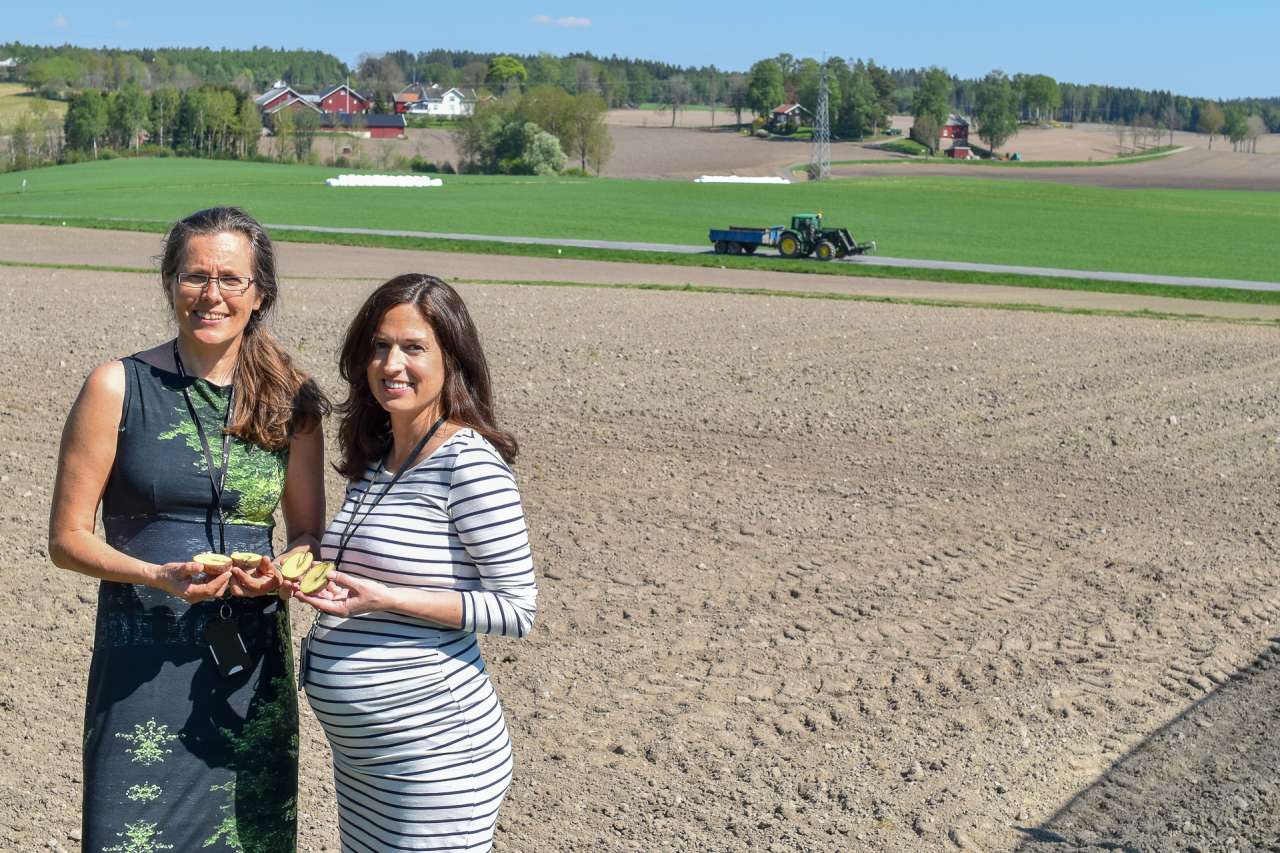New, aggressive blackleg bacteria foundin Norway

Senior Researcher May Bente Brurberg and Researcher Merete Wiken Dees from NIBIO.
Photo: Siri Elise Dybdal.
Stem rot and blackleg result in devastating losses for potato farmers across Europe. In the summer of 2016, many potato fields were struck by aerial stem rot, particularly in Eastern Norway. This bacterial disease causes plants to wither in the fields and infects tubers with blackleg.
In recent years, new strains of blackleg bacteria have been discovered around the world. These strains have proved more aggressive than any seen before. Researchers at NIBIO have now sequenced and named a new strain of blackleg bacteria, Pectobacterium polaris.
The stem rot problem in Norway has increased in the past five to ten years with the appearance of new, more aggressive strains.
“A while ago, we received samples from a field that had been hit by a particularly powerful blackleg attack. From these samples we isolated a previously unknown strain of blackleg bacteria,” says senior researcher May Bente Brurberg from NIBIO. She says the bacteria had also been recorded in other places, including the Netherlands, but had until now not had a name.
“Beyond that, we don’t know much about it or how widespread it is in Norway. But one of the reasons why blackleg is so difficult to eradicate could be that there are a greater variety of bacteria strains than we realised. We currently don’t have a sufficient overview of the existing strains, and we know little about whether the different strains can be fought using the same techniques,” she points out.
There are no known biological or chemical methods to combat blackleg bacteria once it has taken hold. Therefore, one of the most important measures for reducing the spread of the disease is to use healthy, certified seed potatoes.
When handling tubers with blackleg, the bacteria can spread via machines and equipment used for harvesting, sorting, and storage; it can also spread through groundwater.
“It is therefore crucial to regularly clean and disinfect all equipment used for cultivation and storage,” says researcher Merete Wiken Dees.
Contacts

Contacts

